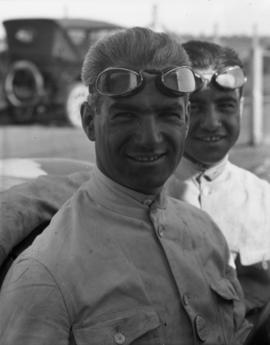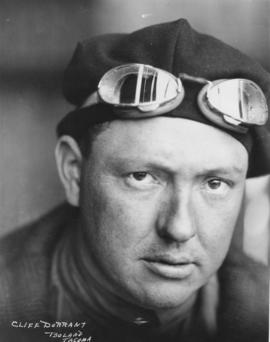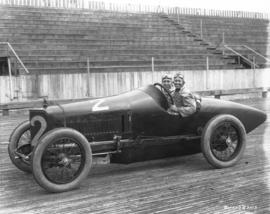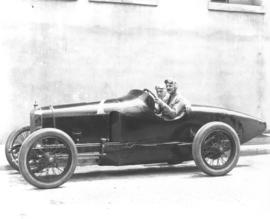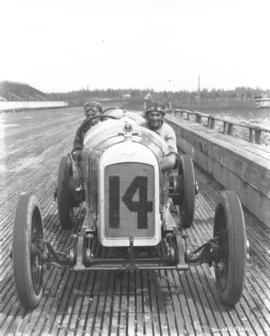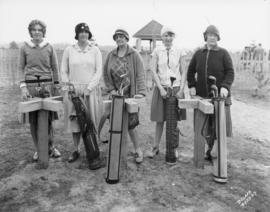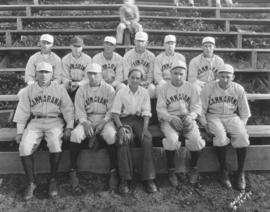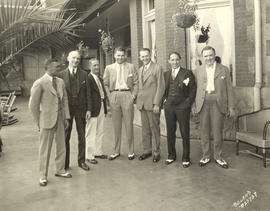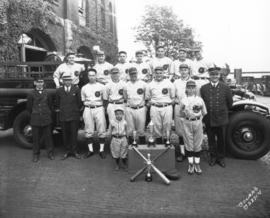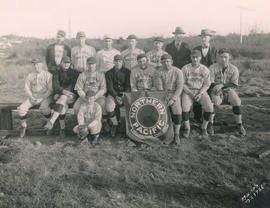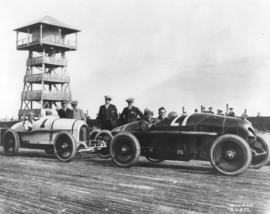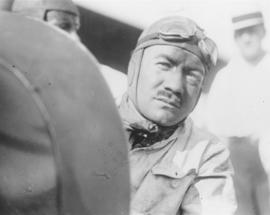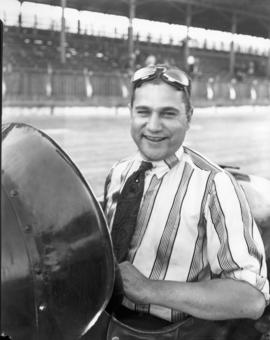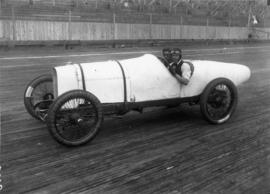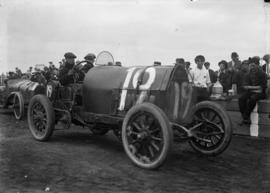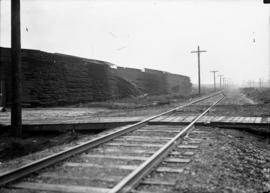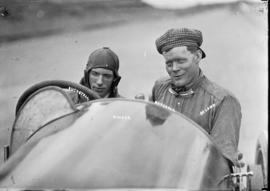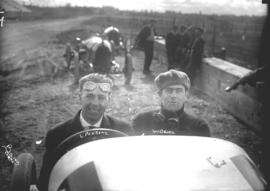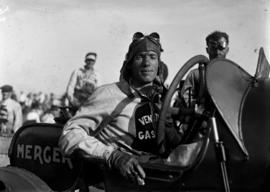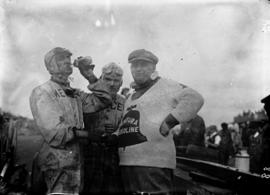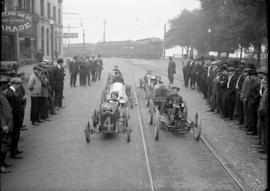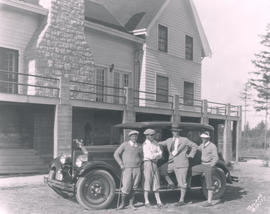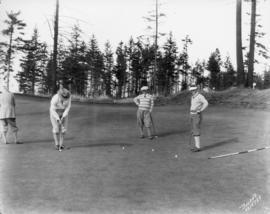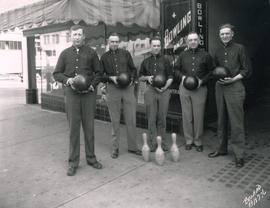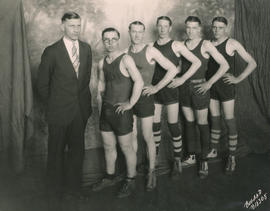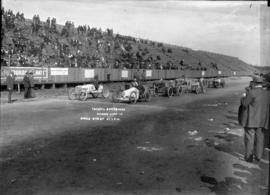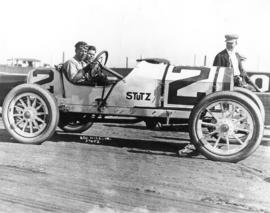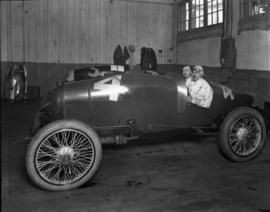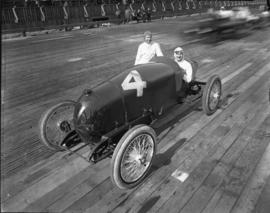- Item
- 1920-07
Part of Marvin Boland Photographs
Ralph DePalma (front) squinted as he smiled into the camera, his goggles pushed up on his forehead, in July of 1920. Behind him is his nephew, Peter DePaolo, future winner of 1925 Indianapolis 500. Ralph DePalma was one of the crowds' favorites entered in the July 5th, 1920 Tacoma Classic auto race at the Tacoma Speedway. He was also one of the favorites of the other drivers due to his unerring good sportsmanship both on and off the track. In his career, which spanned over 25 years beginning early in the century, DePalma won over 2000 races on every surface imaginable. He took every major prize including the Vanderbilt Cup, Savannah Grand Prize, Elgin National Trophy and the Indianapolis 500. He is probably best remembered, however, for a race he lost. In the 1912 Indy 500, after leading for 196 of 200 laps, DePalma's Mercedes cracked a piston, putting him out of the race. He and his mechanic proceeded to push the car the remaining mile and over the finish line, an image that came to represent the race, and overshadowed the winner that year. (TDL 7/5/1920, pg. 3; www.motorsportshalloffame; hickoksports.com; wikipedia) Speedway 116
Tacoma Speedway (Lakewood); Racetracks--Lakewood--1920-1930; Automobile racing--Lakewood--1920-1930; Automobile racing drivers; DePalma, Ralph; DePaolo, Peter;
